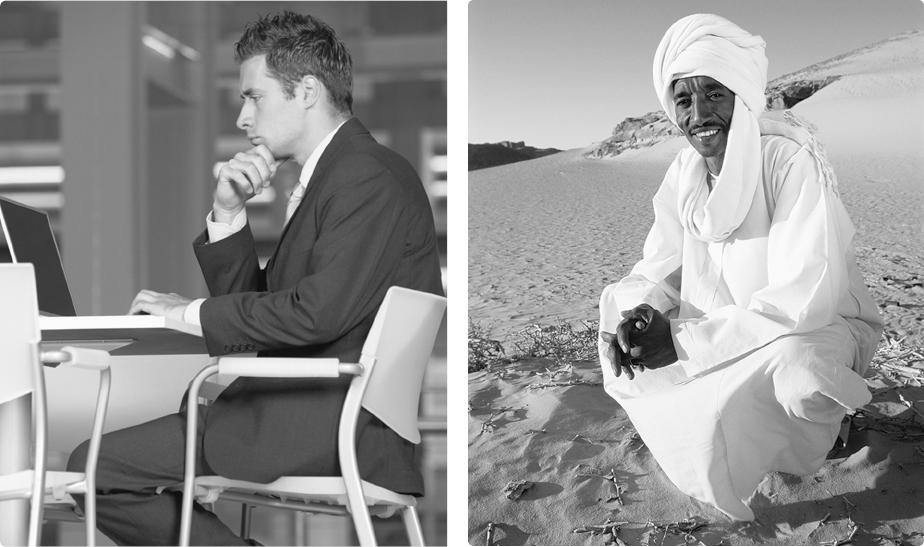Posture
The fourth kinesic is your bodily posture, which includes straightness of back (erect or slouched), body lean (forward, backward, or vertical), straightness of shoulders (firm and broad or slumped), and head position (tilted or straight up). Your posture communicates two primary messages to others: immediacy and power (Mehrabian, 1972). Immediacy is the degree to which you find someone interesting and attractive. Want to nonverbally communicate that you like someone? Lean forward, keep your back straight and your arms open, and hold your head up and facing toward the person when talking. Want to convey dislike? Lean back, close your arms, and look away.

Our postures are determined by conditions and tools. In Western cultures, where many people work in offices, the chair greatly influences body posture. In agrarian and pastoral societies, where people spend most of their lives working outside, body postures are shaped accordingly. In Asia and Africa, for example, a common posture is the deep squat.
(Left to right) Royalty-Free/Corbis; Robert Harding World Imagery/Getty Images
Power is the ability to influence or control other people or events (discussed in detail in Chapter 9). Imagine attending two job interviews in the same afternoon. The first interviewer sits upright, with a tense, rigid body posture. The second interviewer leans back in his chair, with his feet up on his desk and his hands behind his head. Which interviewer has more power? Most Americans would say the second. In the United States, high-status communicators typically use relaxed postures (Burgoon et al., 1996), but in Japan, the opposite is true. Japanese display power through erect posture and feet planted firmly on the floor.